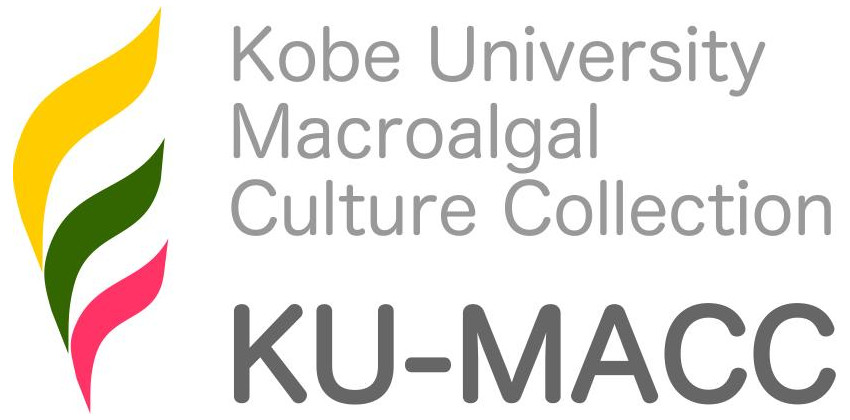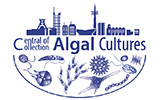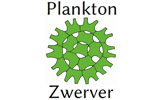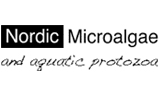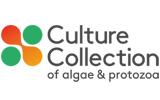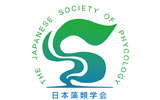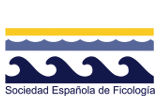Aegagropila linnaei Kützing 1843
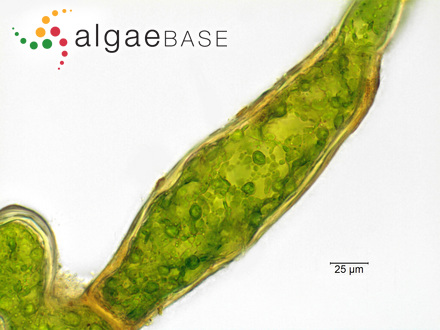
Current name:
Aegagropila brownii (Dillwyn) Kützing
Chloroplast, BF image. Collected by David John from a brackish-water loch, Loch Brugain, on South Uist, Outer Hebrides. - 27 September 2009. C.F.Carter (chris.carter@6cvw.freeuk.com)
Publication Details
Aegagropila linnaei Kützing 1843: 272
Published in: Kützing, F.T. (1843). Phycologia generalis oder Anatomie, Physiologie und Systemkunde der Tange. Mit 80 farbig gedruckten Tafeln, gezeichnet und gravirt vom Verfasser. pp. [part 1]: [i]-xxxii, [1]-142, [part 2:] 143-458, 1, err.], pls 1-80. Leipzig: F.A. Brockhaus.
Publication date: 14-16 Sep 1843
Type Species
This is the type species (lectotype) of the genus Aegagropila.
Status of Name
This name is currently regarded as a synonym of Aegagropila brownii (Dillwyn) Kützing.
Source of Synonymy
Guiry, M.D. & Frödén, P. (2023). Aegagropila brownii (Dillwyn) Kützing is the correct name for Aegagropila linnaei Kützing, the type of Aegagropila Kützing (Pithophoraceae, Chlorophyta), widely known as “Marimo” or “Cladophora Balls”. Notulae Algarum 293: 1-7, 3 figs.
Type Information
Type locality: Sweden; (Hoek 1963: 51) Type: L; 938/303/280 (Hoek 1963: 51)
General Environment
This is a freshwatermarine species.
Created: 04 April 2003 by Elizabeth Moran.
Last updated: 26 September 2023
Verification of Data
Users are responsible for verifying the accuracy of information before use, as noted on the website Content page.
Nomenclatural note
New name for Conferva aegagropila Linnaeus 1753 (INA). - (21 June 2023) - G.M. Guiry
Taxonomic note
Hanyuda et al. (2002) note that Aegagropila linnaei has usually been called Cladophora aegagropila (Linnaeus) Rabenhorst or Cladophora sauteri (Nees ex Kützing) Kützing and that based on morphology, it was formerly classified into section Aegagropila or into the subsection Aegagropila, together with several marine species of the genus Cladophora. This classification is not supported by their phylogenetic analyses in which two very distinct Cladophorales clades are recognized. They conclude that the correct name for Cladophora balls (lake balls or Marimo in Japanese) is A. linnaei. Results also indicate that adaptation from a marine to a freshwater habitat has happened at least twice independently in the Cladophorales. - (28 November 2006) - G.M. Guiry
Conservational note
Cladophora balls, or 'Marimo' as the Japanese call them, were declared a Japanese Natural Treasure in 1921, and then in 1952 became a Special Japanese Natural Treasure. Lake Akan is the most commonly known lake containing the balls, but they can also be found in Lakes Shiranitoro, Toro, Kawaguchi and Sai, all in the Iloklaido district of Japan. Local mythology surrounding these balls tells the story of a young man and young woman who are said to have drowned in the lake, and their hearts turned into Cladophora balls. The survival of the balls in Japan has been under threat on more than one occasion. The use of Lake Akan to transport timber caused many populations to die. As the timber floated in the lake whilst waiting to be transported, it blocked the vital sunlight that the plants require. Between 1945 and 1954, water-powered electrical generators caused a drop in the lake's water level, leaving many plants exposed to the open air, and nearly eradicating the population.
Cladophora balls were first discovered in Lake Zeller, Austria in 1824 by Dr Anton E Sauter, a physician and botanist. They were named Cladophora aegagropila and they belong to the Cladophora sauteri group. Cladophora means 'branched plant', aegagropila means 'lake ball' and sauteri is derived from Dr Sauter's name. Lake balls were subsequently found to exist in the United Kingdom, Russia, Iceland, Sweden and some other countries.
Lake balls have a green velvet-like appearance and have been known to grow to about 30 cm in diameter. At one time it was thought that Cladophora was extremely slow growing, taking between 150 and 200 years to reach the size of a tennis ball. Recent studies however suggest that the slow growth rate in more recent time is due to poor water conditions, It has also been found that the growth rate can be improved by mixing sea water with the lake water. In common with most plants, this species obtains nourishment by absorbing sunlight using the process of photosynthesis. The plants must remain in positions that receive plenty of sunlight otherwise they wilt start to die. Fortunately the plants are able to move around by means of the undercurrents of the lake, which allows them to swap places with plants in the deeper areas of the lake. This process of rotation allows all the plants to photosynthesize and therefore ensures their survival. It has been reported that the plant has the ability to float or sink, in order to position itself depending on the brightness of the sunlight. Plants then to grow in large groups in the shallower parts of the lake, but they can grow so densely that other plant life can be totally obscured. Another benefit of being spherical is that when silt and other fine debris collects on the uppermost surface of the plant, gravity causes it to naturally rotate with the weight and the debris will fall off.
These lake balls are found in Lake Myvatn in northern Iceland and in Lough Arrow in Ireland, although there is far more information relating to the balls found in Lake Akan in Japan. - (18 September 2007) - G.M. Guiry
Linking to this page: https://www.algaebase.org/search/species/detail/?species_id=59094
Citing AlgaeBase
Cite this record as:
M.D. Guiry in Guiry, M.D. & Guiry, G.M. 26 September 2023. AlgaeBase. World-wide electronic publication, National University of Ireland, Galway. https://www.algaebase.org; searched on 01 April 2025
 Request PDF
Request PDF